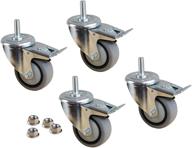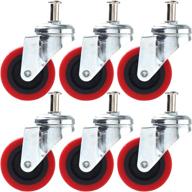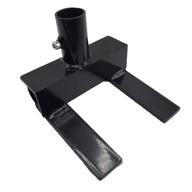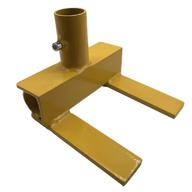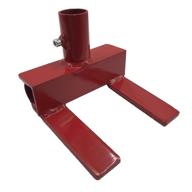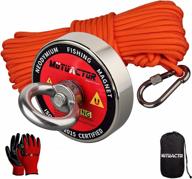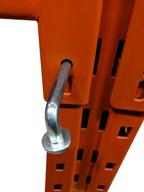The Vital Role of Pallets in Material Handling
Pallets play an integral yet often overlooked role in material handling and logistics operations. They act as the base for storing, moving, and transporting all kinds of products and materials within warehouses, between facilities, and across supply chains.
A pallet is a flat transport structure that supports goods while being lifted by jacks, pallet jacks, front loaders, forklifts, or conveyor systems. Pallets come in different materials like wood, plastic, metal, and paper. They have open slatted construction to allow access by forklifts, pallet jacks and similar equipment.
Key Benefits of Pallets
- Ease of handling - Goods stacked on pallets can be easily moved around with forklifts rather than handling individual items.
- Storage efficiency - Pallets help optimize warehouse storage space through stable, vertical stacking.
- Load securing - Palletized loads are secured against shifting and toppling during transport.
- Cost savings - Pallets reduce labor costs in material handling and packaging.
- Standardization - Standard pallet sizes allow compatibility across supply chains.
- Reusability - Durable pallets can be reused multiple times to maximize value.
Pallete Use in Warehousing
Pallets are indispensable for modern warehouse operations. They enable efficient storage by allowing stable, vertical stacking of palletized loads on racking systems. Forklifts allow fast pallet movement for picking, replenishing, and inventory management. Pallets also facilitate efficient order fulfillment as goods can be quickly retrieved, loaded and shipped out on pallets.
Pallets in Transport and Shipping
Loaded pallets provide a secure and standardized method of load transport. They are compatible with pallet jacks, forklifts, conveyor systems and cargo hauling equipment for seamless portability. Within logistics networks, standardized pallets enable interoperability between different entities like manufacturers, distributors, retailers. They also allow easy load transfers between transport modes like trucks, trains and ships.
Sustainability Impact
Pallets themselves are a source of wood waste if discarded after single use. Advances like wooden pallet recycling and pooled plastic pallet programs help reduce waste. Eco-conscious companies are adopting options like reusable plastic pallets and compressed paper pallets.
| Pallet Material | Sustainability Benefits |
|---|---|
| Wood | Renewable material, recyclable |
| Plastic | Reusable, recyclable |
| Paper | Biodegradable, renewable material |
While seemingly simple, pallets drive immense efficiencies in material handling. Understanding their benefits allows companies to leverage them for substantial cost and productivity gains.
Another interesting products
Key Types of Pallets and Their Differences
Pallets come in a variety of materials, each with their own advantages and limitations. The main pallet types used in material handling include:
Wooden Pallets
Wood is the most common pallet material. It provides good durability and load-bearing strength. Wood pallets are of two main types:
- Stringer pallets - Have 3 parallel runners with perpendicular slatted boards nailed across them.
- Block pallets - Consist of solid blocks stacked closely together.
Pros:
- High load capacity - can handle 500-5000 lbs.
- Good durability with proper repairs.
- Reusable via repairs.
- Recyclable material.
- Splintering risk under moisture.
- Termite and mold susceptibility.
- Not waterproof.
Plastic Pallets
Usually made of materials like Polyethylene or Polypropylene plastic. They are of two types:
- Molded plastic - Single molded piece with hollow legs.
- Plastic lumber - Sawdust and binding agents compressed into boards.
Pros:
- Resistant to moisture, mold and pests.
- Durable and long-lasting.
- Easily cleaned.
- Reusable for extended periods.
- Higher cost than wood pallets.
- Can be brittle and crack in cold temperatures.
Metal Pallets
Made of galvanized or stainless steel. Very durable with high load capacities upto 20,000 lbs.
Pros:
- Withstand very heavy loads.
- Weatherproof and long lasting.
- Sanitizable for sterile uses.
- Heavier and more expensive than wood or plastic.
- Corrosion risk with galvanized steel.
Corrugated Paper Pallets
Made by layering corrugated fiberboard. Eco-friendly and lightweight option.
Pros:
- Biodegradable and recyclable material.
- Lightweight compared to other pallets.
- Low cost, disposable pallets.
- Limited durability with up to 1 year lifespan.
- Low load capacity around 1500-2000 lbs.
- Weakens significantly when wet.
Companies must evaluate their specific requirements like durability needs, sustainability goals, load weights and more when determining the optimal pallet materials for their operations.
Top Benefits of Using Pallets in Material Handling
Using pallets brings significant advantages for companies across manufacturing, warehousing, transportation and retail sectors. Understanding these benefits allows maximizing the value derived from palletization.
Cost Efficiency
Pallets enable more efficient material handling, reducing labor, equipment and handling costs:
- Forklifts can move palletized loads easily and quickly.
- Stacking on pallets optimizes warehouse storage density.
- Pallets speed up loading/unloading of transport vehicles.
- Automated systems like conveyors can seamlessly move palletized goods.
Studies estimate palletization reduces material handling costs by 25-30% versus unpalletized handling.
Durability and Reusability
Wooden and plastic pallets in particular provide durability across multiple uses when maintained properly. Key factors enabling reusability:
- Durable pallet materials - hardwood or plastic.
- Reinforced pallet construction.
- Avoiding excess load weights.
- Regular inspection and repairs.
Reusing pallets greatly improves cost-effectiveness and sustainability.
Product Safety and Stability
Pallets provide a stable and secure base for storing and transporting products, preventing shifting or damage:
- Perimeter base and corner blocks stabilize pallet stacks.
- Banding, wrapping and edge protectors immobilize pallet loads.
- Standard pallet sizes ensure compatibility with handling equipment.
Customization
Although standard sizes exist, pallets can be customized to specific load requirements:
- Non-standard dimensions match product or cargo sizes.
- Reinforced pallets for extra heavy loads.
- Specific materials like wood, plastic or metal.
Sustainability
Initiatives like pallet recycling, reconditioning and pooling maximize sustainability:
- Reusing via repairs reduces waste.
- Recycled and biodegradable materials like recycled plastic and paper.
- Pallet pooling means fewer discarded pallets.
In summary, pallets drive major improvements in warehouse and supply chain efficiency, productivity, safety and sustainability.
Key Pallet Trends and Innovations
Pallets are seeing interesting innovations to enhance efficiency, sustainability, safety and intelligence:
Plastic Pallets
Plastic pallets are gaining adoption with benefits like:
- Reusability - Used up to 100 trips versus 10-20 for wood pallets.
- Consistency - Dimensions and performance unchanged over lifetime.
- Hygiene - Easily washed and sanitized when contaminated.
- Lightweight - Weigh less than wooden pallets, reducing transport costs.
Molded plastic pallets are more expensive but offer great consistency and reusability. Cheaper plastic lumber pallets are also gaining use, made from recycled materials.
Blockchain-Enabled Pallets
Blockchain allows securely tracking pallet movements across the supply chain. Key benefits:
- Real-time tracking of pallet locations and status.
- Prevent and trace pallet theft.
- Optimize pallet reuse, routing and inventory.
- Validate handling and storage conditions like temperature.
Startups like Pallet Logistics offer blockchain-based tracking solutions to retailers like Walmart.
Automated Pallet Handling
Automated robots and systems reduce labor and improve warehouse efficiency:
- Autonomous mobile robots - Guide themselves to transport and stack pallets.
- Palletizing robots - Automate pallet building from cartons and packages.
- AS/RS systems - Automated cranes and shuttles move pallets in racking.
Swisslog and GreyOrange are key vendors enabling automated pallet handling.
Smart Pallets
Smart pallets have embedded sensors that track status data like location, temperature, humidity, defects and more.
- IoT sensors monitor pallet conditions.
- RFID tags enable tracking pallet locations.
- Sensors check product integrity during transport.
Intelligent Pallets is one company offering smart pallets with sensors and data analytics.
Leveraging such emerging technologies allows companies to maximize the operational and business benefits derived from pallets.
Top products in 📦 Pallets
Key Factors to Consider When Buying Pallets
Selecting the right pallets is crucial for enabling efficient material handling and transportation. Here are important factors companies should evaluate when buying pallets:
Load Capacity
Determine the maximum weight loads your pallets must handle:
- Light duty - Under 2,000 lbs
- Medium duty - 2,000 to 5,000 lbs
- Heavy duty - Over 5,000 lbs
Intended Use
Evaluate application needs:
- Storage - Prioritize stackability and rack compatibility.
- In-house transport - Optimize handling efficiency.
- Shipping - Focus on stability and interoperability.
Dimensions
Standard pallet sizes like 40x48 inches optimize compatibility, while customs sizes match specific products or spaces.
Materials
Assess material options against functional needs:
- Wood - Affordable, recyclable.
- Plastic - Durable, consistent.
- Metal - For extreme loads.
- Paper - Lightweight, eco-friendly.
New vs Used
Buying used pallets can slash costs but may have reduced load capacity and lifespan versus new pallets.
Quality and Construction
Higher quality pallets improve durability and safety:
- Reinforced materials and joints.
- High-grade lumber or plastic.
- Precision sizing and assembly.
- Following quality standards.
Supplier Reliability
Choose established suppliers with proper certifications who provide:
- Consistent product quality and availability.
- Responsiveness and agility.
- Value-added services like repairs.
Costs
Balance purchase costs against value factors like quality, lifespan and capabilities.
Evaluating these aspects helps identify optimal pallets for safe and efficient material handling.
"Pallets: The Ultimate Solution For Your Material Handling Needs"
Article Outline:
I. Introduction
II. Advantages of Pallets
III. Types of Pallets
IV. Sustainable Pallet Solutions
V. Clean and Hygienic Pallets
VI. Pallet Recycling and Disposal
VII. Conclusion
What Are The Different Types Of Pallets Available For Material Handling??
There are different types of pallets available for material handling, including:
- Wooden pallets - the most common type of pallet, cheap and easily customizable.
- Plastic pallets - have a long life and high reusability, easy to clean and disinfect.
- Metal pallets - the strongest option, can withstand extreme cold or heat, easy to clean and disinfect.
- Corrugated paper pallets - lightweight and hygienic, made of paperboard sheets.
- Roto-molded pallets - made using a rotational molding method, economical and available in standard sizes.
- Cardboard pallets - designed for light loads, disposable and recyclable, inexpensive and easy to handle.
The type of pallet, size, and loading capacity that suits your needs depends on your business requirements. Each type of pallet has its own advantages and disadvantages, and it is important to choose the right type of pallet for your specific needs.
Similar products


41 Review







